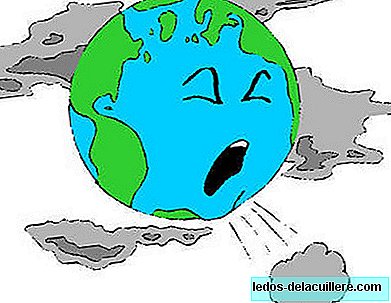
We live surrounded by smoke, toxic substances, cars circulating next to our homes ... Pollution produces a negative alteration of the natural state of the environment, and affects people. It is a proven fact that the elderly and children are more vulnerable to air pollution.
New studies carried out in Spain confirm the relationship between PM2.5 suspended particles (named for measuring less than 2.5 microns in diameter) and the adverse effects they cause on health, especially in children and the elderly.
Suspended particles include a broad spectrum of organic or inorganic substances, dispersed in the air, from natural and artificial sources.
In relation to its effects on health, PM2.5 (“breathable” particles smaller than 2.5μm) can penetrate the gas exchange areas of the lung. They come in almost 90% of the traffic emitted by cars (diesel engines, six times more than gasoline).
The team of researchers from the Carlos III Health Institute of Madrid has shown in two recent articles a clear statistical relationship between the high concentrations of this pollutant and hospital admissions in Madrid capital.
The authors included data from other atmospheric pollutants (nitrogen dioxide, ozone, PM10 particles ...), noise pollution, pollen of various species, meteorological variables ... The paper concludes that PM2.5 is the only primary pollutant that appears related to hospital admissions
The concentrations of these particles have important effects on the health of children.: Pollution usually causes inflammation of the airway and as children have the smallest, narrowest airways, inflammation obstructs them more easily. In the case of asthmatic children, problems and income occur more easily.
The problem is that in the cities the maximum recommendations of pollutant levels are often exceeded, in a situation that does not seem to go less but, on the contrary, increase more and more.
We already saw that living near a highway could hinder children's lung development and a study by the World Health Organization (2004) states that exposure to suspended particles is the cause of premature death of 13,000 children among one and four years old, every year.
We must be aware of the health risks of exposure to pollutants of which, unfortunately, we are surrounded in cities and in many homes, and especially for children, who are more vulnerable to pollution since your respiratory system is immature.












